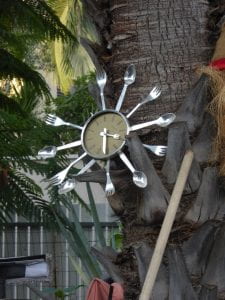
Naomi’s Photos
I didn’t plan on having a “Korean Themed Month”.
In fact, there weren’t any theme plans at all – it just turned out that way!
It all began with the movie “Parasites” by Korean director Bong Joon Ho. There was a lot of favorable talk about the film after the Cannes film festival 2019 film (the movie won the Palm de Or) so we went to see it at the cinema.
I’m glad we did!
As someone who is very good at predicting events in movies, I found myself riveted to the screen (except for a few scenes which are difficult to watch. I closed my eyes), not knowing what would happen next. It’s funny, sad, shocking and strange, leaving one with a lot to think about. There is a lot of social commentary here from different angles – is the movie just about a poor family taking advantage of a rich one (hence “parasites”) or are the rich also “parasites”? Perhaps the role of “diplomas” and what they really stand for?
Then we discovered that another movie by the same director was on Netflix – “Okja”.
This begins like an adventure/fantasy/action film that totally glued us to the screen, it was so larger-than-life, funny, and aesthetically beautiful. After about 15 minutes into the film I was pretty sure that this movie was a Korean fantasy version of “Free Willy” except with a genetically modified supersize (truly big!) pig. A very good-natured pig, by the way.
I was WRONG.
Yes, the movie IS about saving the pig but there is so much more. Much more.
It seems to me that this is the director’s way of presenting things – starting with a funny and intriguing part, drawing you in, keeping you amused and then walloping you lots of social commentary. No one is spared – rich and poor, animal exploiters and animal activists and more.
If you haven’t seen these movies don’t read up on them – just watch them. You really don’t want spoilers!
I am also reading the book “Pachinko”, by Min Jin Lee
I don’t usually write about books I haven’t quite finished (I’m reading it on a Kindle, so I can tell you that I have read 86% of the book) but there are exceptions to every rule.
The book is a family saga over several generations. It begins with a family of humble means in Korea, in the early years of the 20th century. While it begins in Korea, the major part of the tale follows the family’s trials, tribulations, and triumphs over a long period of time as they live in Japan. There is a strong emphasis on cultural background (mainly Korean but Japanese as well) with vivid descriptions of food, dress, customs and more.
Till now I was quite happy with the book. There’s a lot I didn’t know. I hadn’t even looked up “Pachinko” until midway through the book because it hadn’t occurred to me that it was a “thing”! However, it’s a shame the book isn’t a bit shorter – this last section is getting to be far too “soap opery” for me. There is a limit to the number of generations and family members who deal with calamities and blame most of them on the fact that the poor main character got pregnant when she was 15 to someone who would not marry her that I have the patience for.
If there is something that the book presents as a common theme to both Korean and Japanese cultures is that there are no “second chances”, the sins of the fathers will haunt the descendants forever…
Nonetheless, I recommend the book.
Finally,
I knew this was a “Korean Themed Month” when I sat down yesterday to look for a new vegetarian recipe to try, and the first recipe that popped up was Vegan Korean Bulgogi! Not a dish I had heard of before. I can’t really report on that though since I made so many changes as I was cooking that it morphed into something else entirely.
Here’s to movies and books that take you around the globe!




